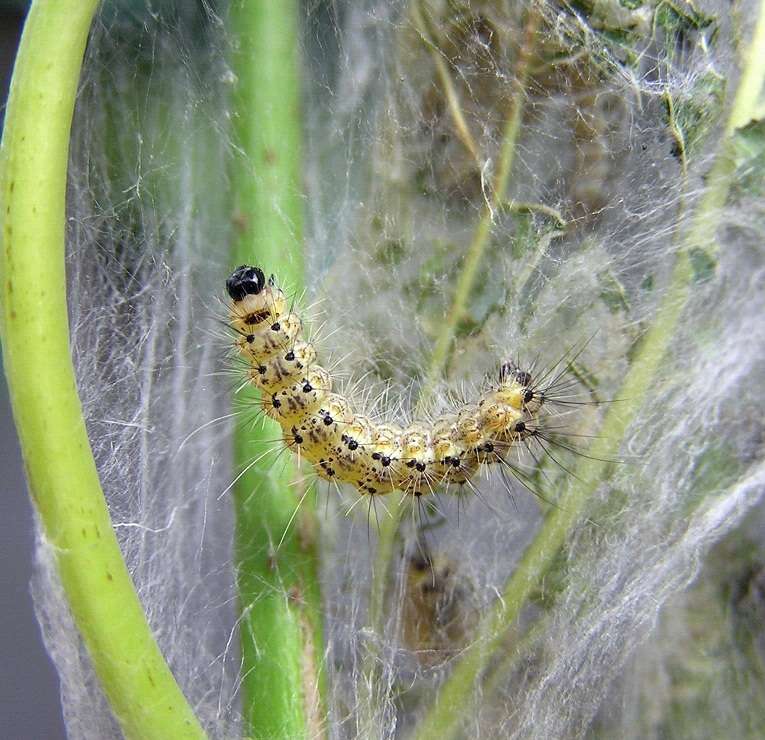Reproduction
There is unfortunately not a lot of information on the
reproductive, and life cycle of Hyphantria cunea. However, since
they are in Order Lepidoptera and undergo complete metamorphosis
from larvae to pupae, to adult we can fill in the blanks with
basic knowledge on the life cycle of typical Lepidoptera. A
female Hyphantria cunea will lay her eggs after mating with a
male. She will deposit her eggs up in a tree, typically on a
branch surrounded by leaves or on leaves. The larvae will hatch
during the early to late fall and once they hatch they
immediately begin feeding on the leaves of the tree. The larvae
create a web-like tent (hence why they are called fall webworms)
that helps protect them from diurnal predators such as bird and
wasps.

The larvae will continue consuming leaves to store up energy for
metamorphosis. Because metamorphosis is such a complicated
process on the biochemical level, a lot of energy is needed to
undergo this process. So the webworms need to eat a lot! Once
they have reached a certain size, the webworms will start to
transform into their pupae stage. The pupas are made out of the
same material as their “web-tents” but are rolled more tightly
together to provide a protective barrier from external
extremities. While inside the cocoon, the larva undergoes the
complicated process of changing from a larva into an adult moth
form. Once the metamorphosis is complete, the moth will emerge
from the cocoon and take flight. The adult will spend most of
its time pollinating and feeding from flowers. During mid to
late summer, the moths will mate with one another. Female moths
attract the males by using a special kind of pheromone. Once the
copulation is completed, the male will leave the female. The
female will then deposit her eggs on a leaf or tree, and the
cycle starts all over again.